If you’re a Revolver Guy, you’re probably a pretty serious student of handgunnery. We can acknowledge to each other that there are a couple different categories of shooters out there. There’s guys like us that dry practice all the time and run through several thousand rounds a year. Guys that know what their carry gun will do at 100 yards and have sore knees from crawling around in gravel looking for that sixth piece of brass. You guys and gals aren’t the group I am concerned about. If you want to carry a revolver, a 1911, a DA/SA gun, or… well, whatever blows your skirt up, you won’t get too much argument from me. You know pretty well what you’re doing and I won’t pretend to know better than you what works for YOU.
Then there’s that other group of shooters. We all know them. The ones that buy two boxes of ammo: a box of hollowpoints and a box of ball, and consider it “enough”. You know, the ones that annoy you by calling it a clip, and ND staples into their fingertips because they haven’t hung enough targets to know not to hold ’em like that? At this point it might sound like I’m being condescending, but I’m not. I’m being a little lighthearted, but something happened in my own life recently that made me very concerned for this group of gun owners and carriers. I have a few of these individuals in my life that I care about greatly, and want to see safe and protected. It is for this reason that I present my case for revolvers for non-shooters.
Are Revolvers the Solution?
Before we talk revolvers, let’s talk about semi-automatic handguns a little. The text messages depicted in the image below originated with a friend asking me about the condition of her Sig Sauer P938. Though she does not carry, this individual has a concealed carry permit and has attended at least two, day-long, woman-only shooting classes that I know of. But those were so long ago that she can’t even remember which way the safety on her gun goes.
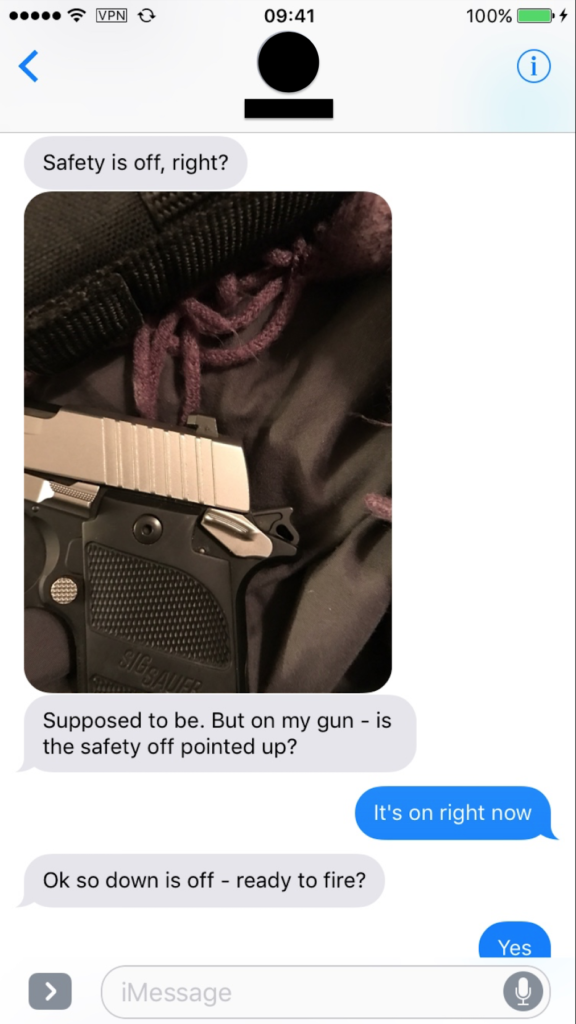 When I received this message I felt that investigating a little further was a reasonable response. It turns out that she had seen a “sketchy” guy in her neighborhood and felt like it would be a good idea to go ahead have her gun handy. I can’t fault her for wanting to feel safe in her own home. However, if she can’t remember which way the safety goes, is the gun really making her safer, or just making her feel safer? And what else is she forgetting?
When I received this message I felt that investigating a little further was a reasonable response. It turns out that she had seen a “sketchy” guy in her neighborhood and felt like it would be a good idea to go ahead have her gun handy. I can’t fault her for wanting to feel safe in her own home. However, if she can’t remember which way the safety goes, is the gun really making her safer, or just making her feel safer? And what else is she forgetting?
One seriously doubts that she could unload and clear the weapon if necessary. One further doubts she could employ it to great effect, especially considering she isn’t confident in the two positions of the safety. It is also possible (terrifyingly so) that she has been handling and possibly carrying this single-action semi-auto with the safety disengaged. And we haven’t even addressed the fact that this little aluminum-framed 9mm is a handful. Is this, or any semi-automatic handgun, really the best choice for her?
Revolvers For Non-Shooters
I don’t think revolvers are right for everyone, but would this woman (and others like her) be better served with a revolver? I contend that the answer in this case is unequivocally “YES.” To say that this individual has fired 250 rounds in the last five years is extremely optimistic. A revolver might be the right choice, but it requires the right revolver. The S&W 637 shown below is pretty much exactly the wrong revolver to put in the hands of a non-shooter. The extended Crimson Trace grip on the gun is the the sole feature to recommend it. This gun is an expert’s carry gun or backup piece – not a home defense gun for a non-shooter. It is too light, smaller than it needs to be, and has a very difficult trigger.
A suitable revolver (in my opinion) would be all steel, have a 3- to 6-inch barrel, and be made by a reputable manufacturer. Capacity would ideally be six, but I would settle for five in a case like this. A K-Frame Smith, or a Ruger SP101 would be my go-to firearms for people in this category. Even even an appropriately-loaded Kimber K6S would be better than the aforementioned Sig. Ideally such a firearm would also be double-action only.
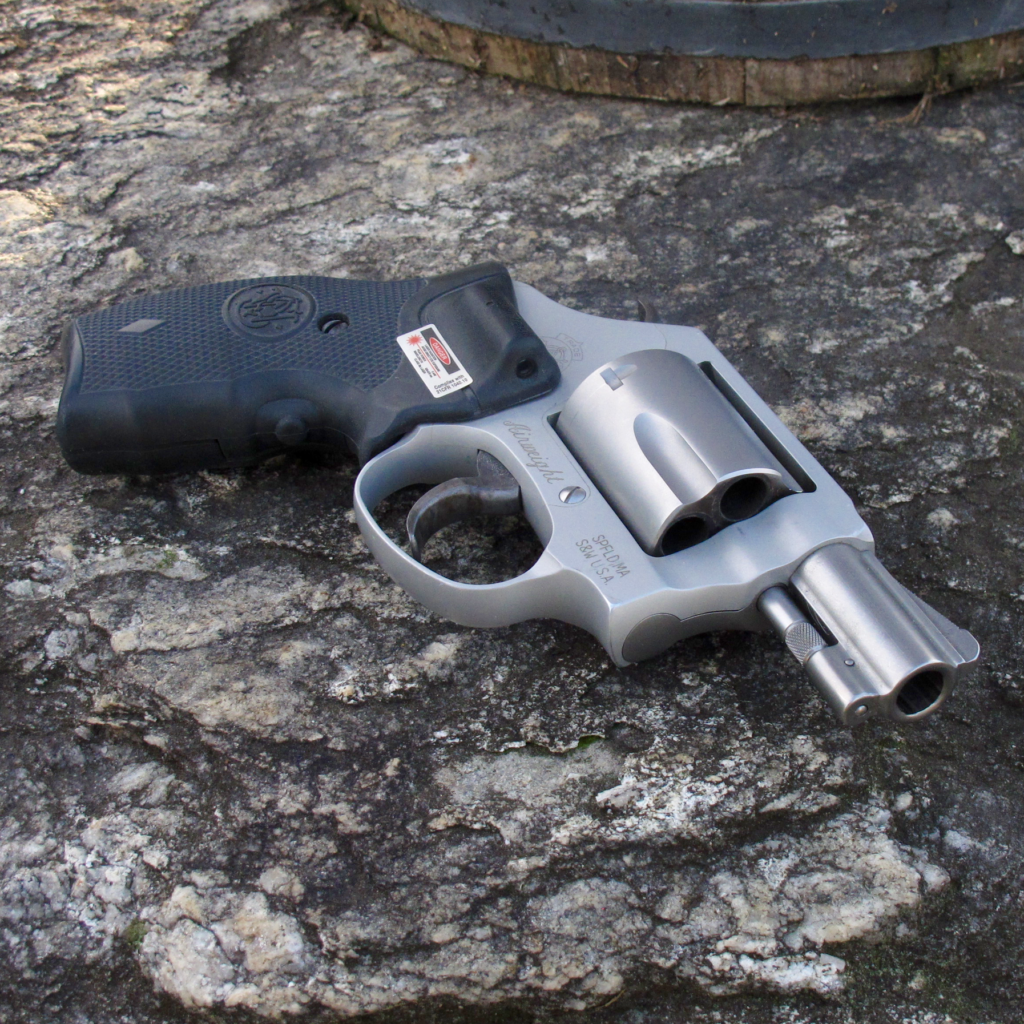
Revolver Advantages
Why do I feel this way about revolvers for non-shooters?
Advantage #1: The main merit of the double-action revolver is simplicity. The safeties, takedown levers, decockers, magazine releases, slide locks/stops/releases (as you prefer to refer to them) that are so familiar to you and me are absent. These gizmos are not second nature or self-explanatory to the novice. It is easy for enthusiasts like me to get into a feedback loop and assume that my knowledge is common knowledge. This is not the case.
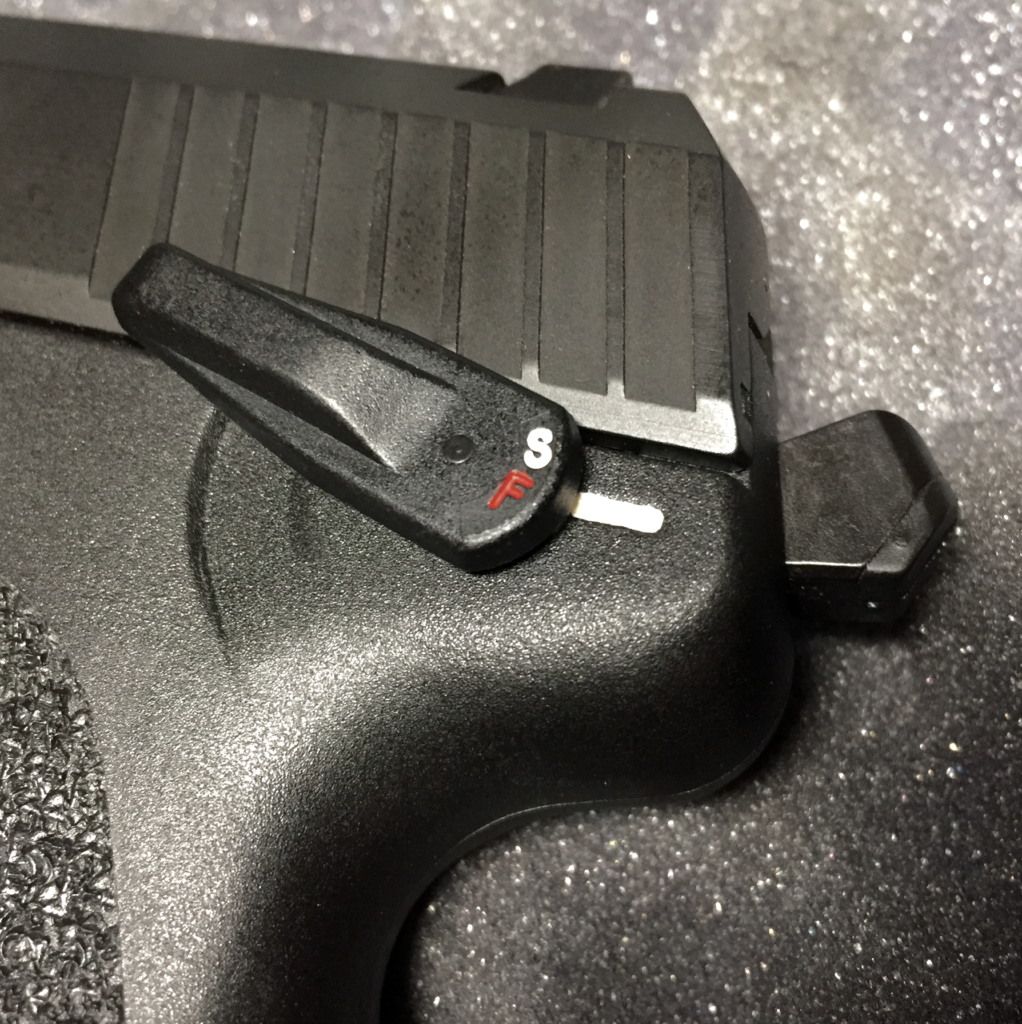
Advantage #2: It is extremely easy to determine if a revolver is loaded or unloaded. A quick look is all it takes. It’s also really easy to unload a wheelgun, and there’s no round in the chamber to be forgotten. It’s an easy process: open, dump. Are rounds still there? Repeat step #2 as necessary until no shiny stuff is in the cylinder.
Advantage #3: Operating the double-action revolver does require dealing with a long, heavy trigger pull, falling somewhere between 8 and 12 lbs. I believe this is a good thing. Pulling this trigger inadvertently is much more difficult than doing the same on a Glock or M&P.
Advantage #4: Another pretty important reason revolvers for non-shooters is a good idea: they handle neglect well. If that revolver isn’t pulled out of wherever it is stored for a period of months numbering in the triple-digits, it will mostly likely work just fine. A semi-auto might, too, but I’d put my money on the revolver.
Advantage #5: Since most non-shooters aren’t going to test their defense ammo, this one is pretty important, too: revolvers aren’t ammunition sensitive. If it fits in the cylinder you can pretty much count on it working. I wouldn’t trust a semi-auto with ammo I hadn’t tested in it, but I’d be ok with an untested revolver/ammo combination.
Revolver Disadvantages
It would be disingenuous to ignore the disadvantages of a revolver. I do believe they are strongly outweighed, but let’s get them out in the open.
Disadvantage #1: The biggest problem I see with most revolvers is the temptation to cock the hammer. In the hands of the shooter mentioned here, this creates an extremely dangerous situation. Because of the perception of the trigger being long and heavy, the shooter may attempt to “fix” it by cocking the hammer. This is a problem. Does she know how to safely decock it? Probably not. Does she realize the potential for negligently discharging the gun with the hammer cocked? Again, probably not. This can be avoided with a bobbed hammer or DAO revolver, but mid-sized DAO wheelguns are few and far between.
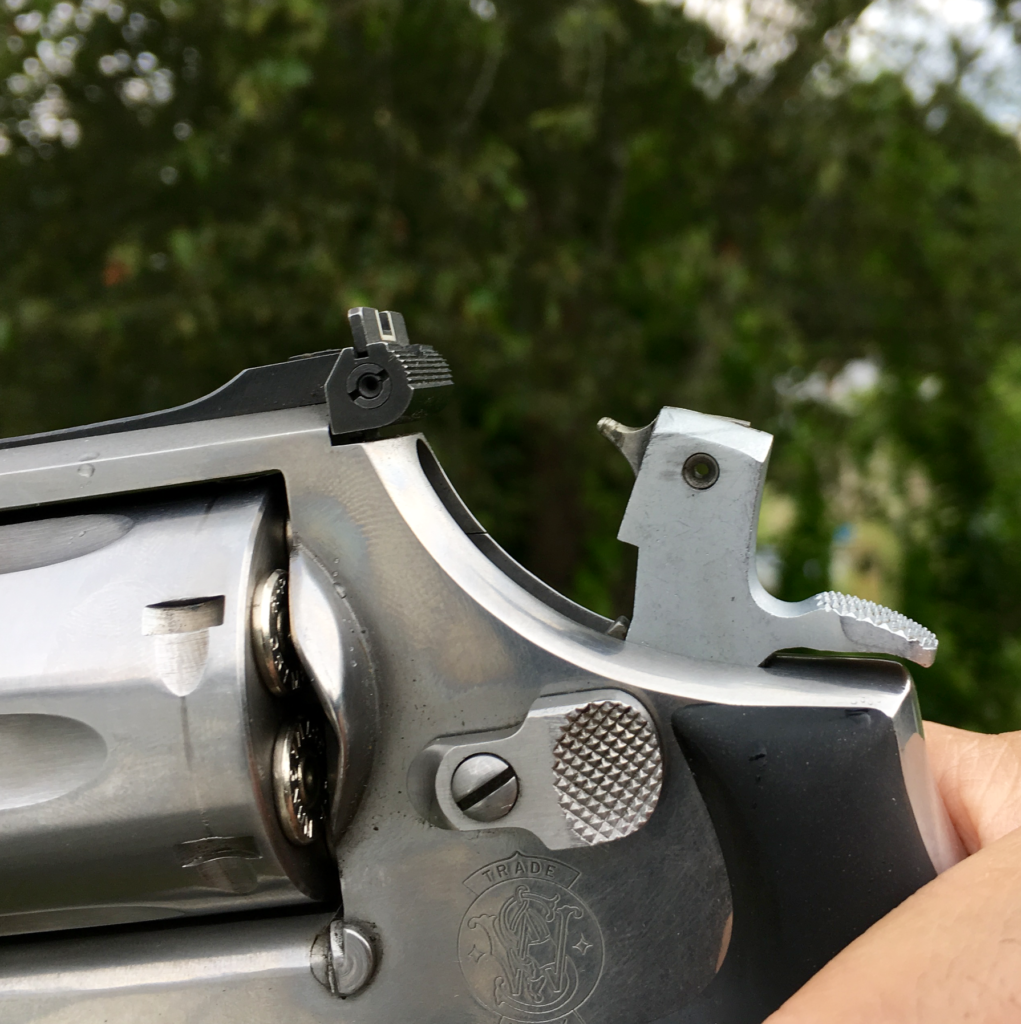
Disadvantage #2: The most obvious disadvantage of the revolver is capacity. But is this the biggest problem a shooter of this experience- and skill-level faces? I believe that in this instance the ability to produce a firearm – ANY firearm – and not be a danger to self or others in the meantime is the more pressing concern.
Disadvantage #3: Unless you buy a revolver with adjustables, the sights aren’t going to be anything to write home about. The good news: you can easily add a Crimson Trace laser grip to most modern revolvers… Assuming you can convince the non-shooter to spend a cash on them.
Disadvantage #4: The long, heavy double-action trigger. Yep, this one made both lists. People with weak hand strength or injuries may not be physically capable of manipulating the DA trigger. If this is the case, the revolver is obviously contraindicated. Those with weak hand strength may find the DA trigger difficult to pull, and resort to disadvantage #1.
The Bottom Line
The real answer to this problem does not lie in hardware. The real answer is training and mindset. Individuals like this should invest time in learning their firearm, and time maintaining that knowledge. And it wouldn’t take a whole lot. Ten minutes of dry practice once or twice a week following one of her days of training would put her far ahead of her current curve. But that’s the answer few seem to want to hear.
A revolver is not a magic, end-all/be-all solution. In fact, it isn’t a solution to many of the problems inherent in this issue at all. It won’t turn a non-shooter into an expert and it won’t make up for unsafe gun-handling. However, if the individual doesn’t touch the gun for three years, he or she will likely still know how to load it, shoot it, and make it safe. And that long, DA trigger makes me feel better than that of a striker-fired or SA bottom feeder. If you run across an individual like this, steer them toward a SP101 or that used Model 64 on the bottom shelf. It’s not as sleek or sexy as that $650 Sig, but I believe it will serve them better.

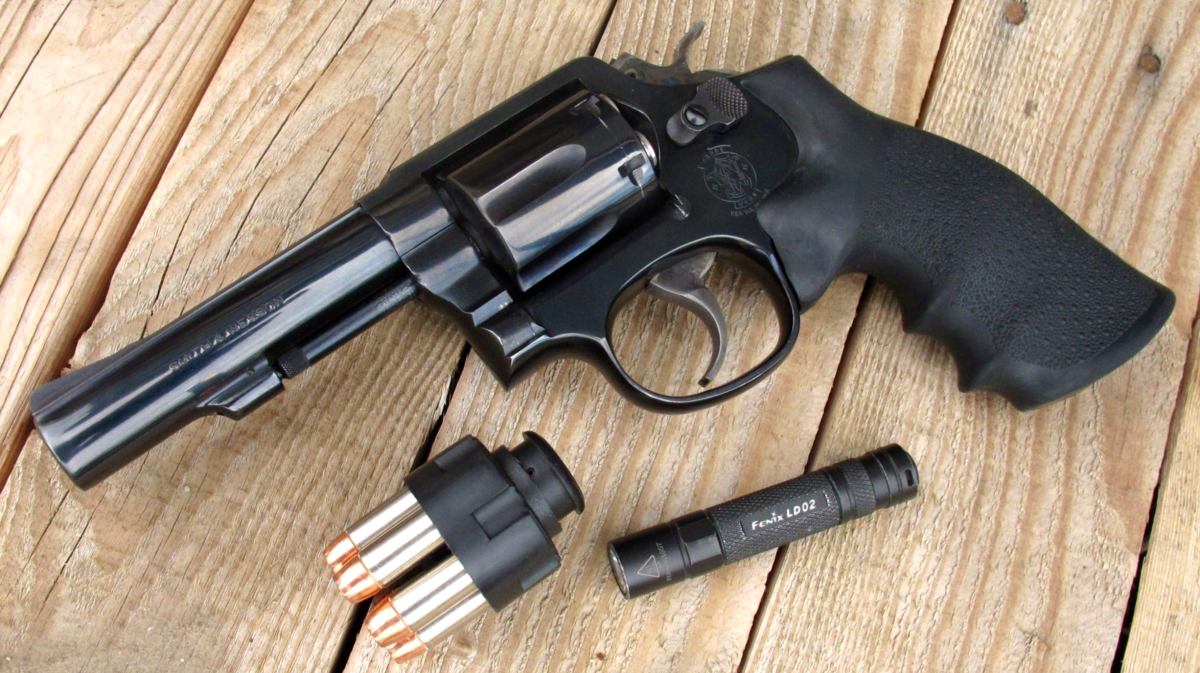
Great article I’ve carried a revolver since 1981 only handguns I own are revolvers I have some friends like that some probably shouldn’t carry or even own a gun I’m lucky to have a private range so practice is often wife also has carried one for over 30 yrs love em but not for everyone
Truer words were never spoken : The real answer to this problem does not lie in hardware. The real answer is training and mindset.
Very few people slid down the birth canal with firearms skills in place. Those that did,,, well I’m going to call that talent,,, God given talent. The remainder of us poor saps work, and work hard to learn.
Good post, looking at the pros & cons.
The trigger weight problem and the temptation to cock the hammer go hand-in-hand. If there’s a way to stop the inexperienced shooter from doing that I haven’t found it, and the same inexperienced shooter is highly unlikely to pay to have his revolver altered to DAO. Maybe the best you can do is say, “Don’t do this, but if you do, here’s how to fix it,” and show them how to safely lower a cocked hammer.
As far as sights, I would recommend the new shooter buy a fixed-sight revolver like a Model 10, an old Speed-Six, or a new 3-inch GP100. The sights will be close enough for self-defense work unless the gun is a complete lemon or has been damaged.
The only revolver I couldn’t get to shoot reasonably POA/POI was a 1974-era Taurus with adjustable sights. I couldn’t get it to shoot less than a foot high at 25 yards.
Here’s how you keep someone from cocking the hammer: You cut the spur off.
They can’t cock what they can’t grab. Wait, that doesn’t sound right…
Excellent comments. One revolver advantage that is typically forgotten is that it can be fired repeatedly from any orientation or limp wrist. If, heaven forbid, you are rolling around in the dirt with an assailant, a revolver is still viable.
I have also noticed that the perception of heavy trigger pull is often due to either an improper grip, or more commonly an improper grip size. Don’t give large guns to small hands, or small guns to large hands.
One more comment. People tend to think that a 22 revolver would be easier to shoot than a 38 or larger. Nope. The spring pull on a 22 is almost double that of a slicked up or well-used 38.
George,
Great observations! Thank you for writing in!
Justin
I like your blog, Justin, so thanks. This comment relates to this post as well as your first (Jan 1.) post, both of which reflected on the advantages and disadvantages of revolvers for self defense and shooting in general.
I have always liked revolvers. I inherited this preference partly from my dad and maybe also from having no association with military service or law enforcement. I do, however, have a hunting background where kit guns and handgun hunting typically involves revolvers.
I agree with the accuracy disadvantages posed by poor sights (on concealed carry revolvers, anyway) and long, stiff triggers. My only answer to that is practicing a lot with the same revolver. I have settled on the Ruger SP101, of which I own four (one in .22, and the other three in .357 magnum). When I practice with one, I am practicing with the same trigger, sights, and grips as the others. In a worst case prepper scenario, I could also swap out the interchangeable parts.
Naturally, the various holsters I have fit any/all of these revolvers. This is handy because I generally carry three of them at a time while commuting or working: one in my pocket (or shoulder rig, or belly band), and two more in matching Galco Ankle Gloves. Of course I have read internet opinions that SP101 is too beefy for pocket carry and too heavy for ankle carry. All I can say is, it works for me and my somewhat sedentary situation (but probably not if I had to stomp up and down a construction site all day). Having the two New York reloads is my answer to the capacity disadvantage.
Uh oh. You’re not going to like tomorrow’s blog post… I’m kidding, but there are a lot of sides to consider with revolvers (or any gun). You can make them work for you, but it IS work. Thanks for writing in with this thoughtful post!
Justin
Right in the sweet spot for weight and “shootability” is the 3 inch Smith & Wesson model 60. With Crimson trace grips, it is almost perfect for the “non-shooter” gun owner.
The bad news is that they are hard to find on the used-gun shelf. They just don’t stay there very long.
After that, I would second the choice of a used model 10 or model 64. They’re still available in the $300 range, if you shop around.
A friend asked me for advice on buying a gun. I recommended a revolver instread of a semi-auto. She didn’t know the difference. After explaining the difference, I was more than sure my friend shouldn’t be using a semi-auto!
This same friend doesn’t lock the doors of her house. Perhaps that would be a better idea than buying guns for her.
Absolutely agreed! Without training, mindset, and willingness a gun is little more than a talisman and might actually be counterproductive to her aim of being safer. Sadly I know more than a few people that own guns for home protection, but who also routinely fail to lock their doors (which means they are leaving a gun unsecured for a big portion of the day – not a great idea in my opinion!). If she’s determined to have one I’m convinced a revolver is a better choice. Just don’t let her get an Airweight!
I was just now reading this article. Very good! I’ve been familiar with revolvers since I started shooting…a Ruger Single Six I bought from an overseas PX. Anyhow, the comment I have is: Constant awareness! NEVER assume nothin’! One day, I was finished at the range, and rather than shooting the cylinder full…they likely had called a sudden cease fire. I opened the cylinder and dumped the rounds into my hand, and probably put them in my pocket. I got home, ready to clean my gun, and when I opened the cylinder to check the gun, there was a final round that hadn’t ejected! I removed the round, then sat quietly for a while, considering life’s lessons. I now rotate the cylinder after unloading, just to be sure I haven’t forgotten something. I learn slow, but I learn GOOD!
Thanx for this and other articles.